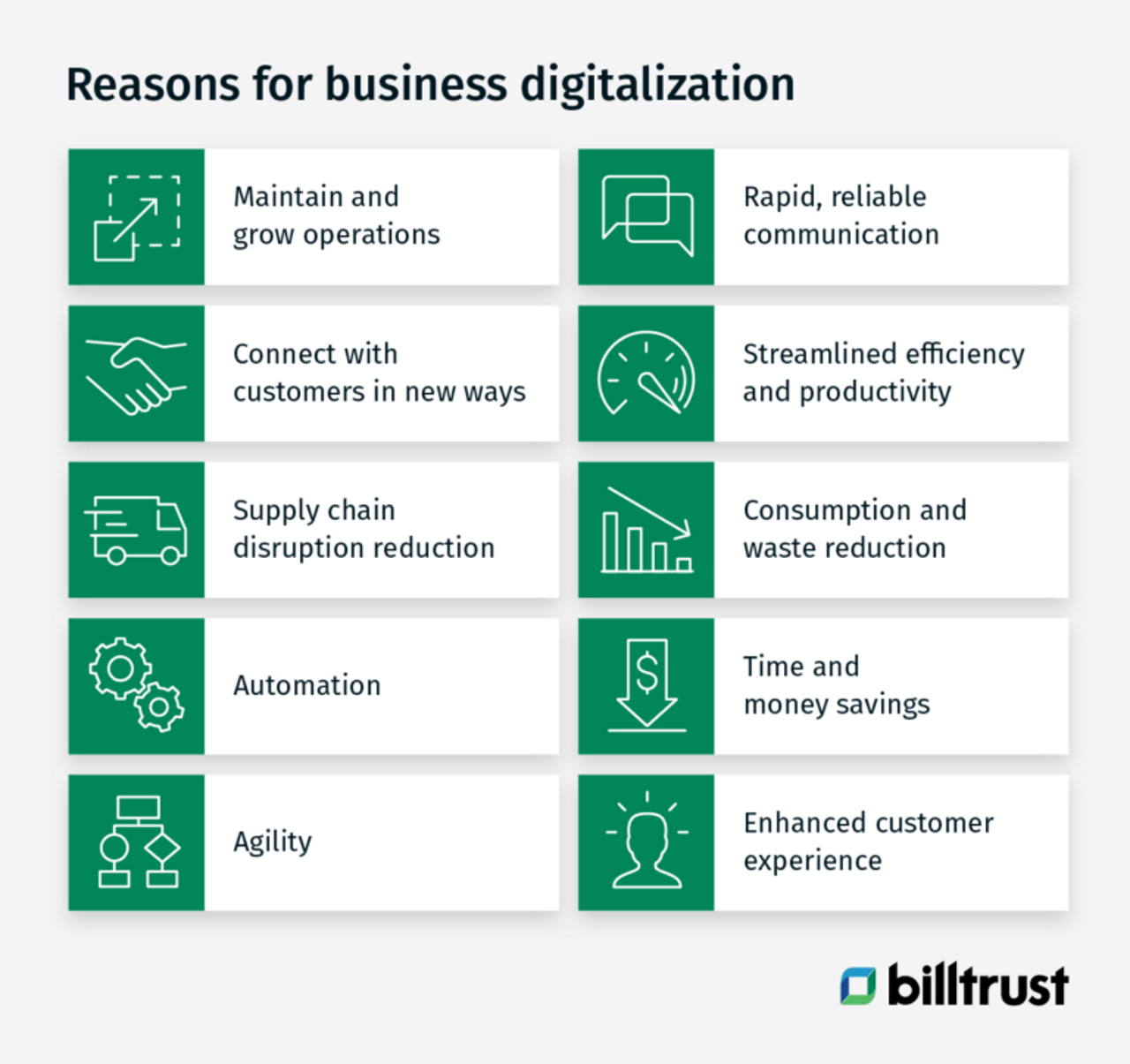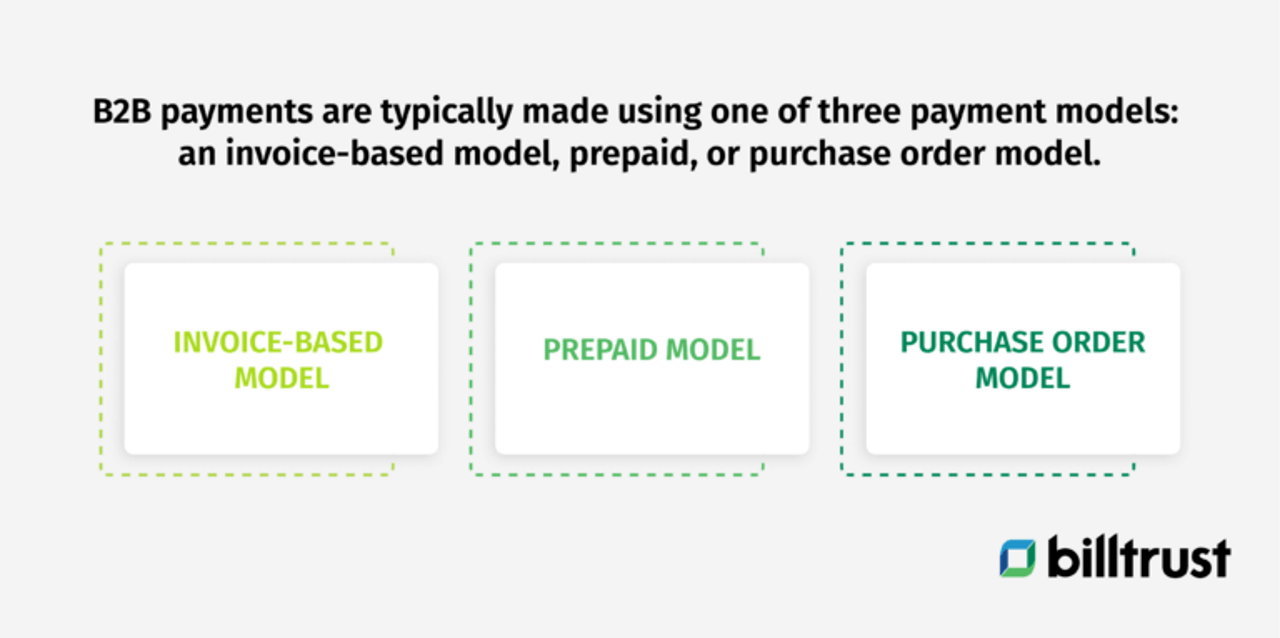In a world where technology is constantly advancing, it’s crucial for your business to stay ahead of the curve when it comes to payment processing. Fortunately, several innovative B2B payments technologies can help your business do just that.
What are the cutting-edge options available for your business?
Read on to learn more about how each of these technologies works and determine which one is best for you. With the right tool in place, you can enjoy easier and faster payment processing.

What is a B2B payment method?
B2B payments are made between two businesses instead of B2C payments between companies and consumers. They’re processed through a merchant account, a bank account that allows businesses to accept credit and debit card payments. B2B payments can also be made using B2B payment processors, which are online platforms that facilitate B2B transactions.
Business-to-business payments are often used for large-scale transactions, such as invoices or payroll. They’re handled through platforms designed to streamline the payment process and improve security. In addition, these technologies usually offer automated payment processing, fraud prevention and data management. B2B payments platforms can also help your company manage its cash flow and reduce administrative costs.
How do you process B2B transactions?
B2B payments are typically made using one of three payment models: an invoice-based model, prepaid, or purchase order model.
Invoice-based model
Invoice-based B2B payments are made after the product or service has been delivered and the buyer has received an invoice from the seller. The buyer then has a set period of time to pay the invoice, usually within 30 days.
The main advantage of this type of payment model is that it gives the buyer more time to pay for the product or service they received. This can be helpful for businesses that have cash flow issues or that need more time to generate revenue.
Prepaid model
In a prepaid B2B transaction, the buyer pays for the product or service before receiving it. Businesses uses this type of payment for larger purchases, such as office equipment or software.
Prepaying for a product or service can be helpful for buyers because it allows them to budget their expenses and avoid the interest charges that come with traditional financing options. It can also be beneficial for sellers because it guarantees that they will receive payment for the product or service they provide.
Purchase order model
In a purchase order B2B transaction, the payment is made when the purchase order is placed and often used for large orders that must be shipped or delivered.
The main advantage of the purchase order model is that it allows businesses to avoid the interest charges associated with traditional financing options. It can also be beneficial for sellers because it guarantees that they will receive payment for the product or service they provide.

What are the most popular types of B2B payments?
There are many options available to businesses when it comes to B2B payments, including credit cards, debit cards, wire transfers, ACH transfers and more, each with its own advantages and disadvantages.
The most popular B2B payments technologies include:
Credit and debit cards: Virtual cards offer convenience and flexibility, but they also come with high credit card processing fees.
Check: Paying by a check is still a popular option for B2B payments, although it’s not as commonly used today. Check payment can be slow and cumbersome, but it offers some security and fraud prevention benefits.
ACH: ACH (Automated Clearing House) payment is a bit slower, but typically costs less. ACH allows businesses to transfer funds between bank accounts electronically and is often used for payroll or invoicing.
Wire transfers: A wire transfer is fast, efficient and generally more secure than ACH but more expensive. Businesses use them for one-time or international payments.
Check 21: Check 21 is another option that has gained popularity in recent years because it allows businesses to send and receive electronic checks with all the credentials of an original check.
Paying by cryptocurrency has gained some interest, and some company leaders are still unsure about allowing payment via crypto. For this reason, it may be a few more years before it’s a widely accepted payment method. Ultimately, the best B2B payments solution depends on the needs of your business. Whichever technology you choose, make sure that you understand the fees involved to keep your costs under control.
Download the ultimate guide to digital accounts receivable
Why are there different types of payment systems?
B2B payments technology has come a long way in recent years. However, there are still a few different types of payment systems in use today and many reasons why businesses might choose to implement various kinds of payment systems:
- One of the most important factors is the type of transactions a business processes. For example, companies that deal primarily in B2B payments may require a different payment system than those that sell directly to consumers.
- Businesses use corporate credit cards, which all types of payment systems may not accept. This would make it necessary to implement another system.
- In addition, B2B payments often involve larger sums of money and can take place regularly, so businesses need to be able to process these payments quickly and efficiently.
- Another factor to consider is the cost of implementing and maintaining a particular type of payment system. Some payment systems can be costly to set up and maintain, so businesses must carefully weigh the costs and benefits before deciding which system is right.
Ultimately, there is no one-size-fits-all answer when choosing a payment system, and businesses need to consider their needs before making a decision carefully.
How do businesses benefit from electronic payments?
Electronic B2B payments are becoming increasingly popular as businesses look for ways to streamline their operations and reduce costs. By using B2B payments technology, companies can eliminate the need for paper checks, which can be slow and expensive to process.
They also offer additional benefits, such as:
- Electronic payments can help to streamline the payment process, saving time and money.
- They can also provide greater security and transparency and reduce the risk of fraud.
- E-payments can help businesses build stronger relationships with their customers by making it easier for them to pay on time and track their spending.
- Electronic payments allows for faster payments, which can improve your cash flow.
- E-payments are more convenient, allowing you to accept payments anywhere.
- Electronic payments are more flexible, giving businesses the ability to customize their payment terms to suit their specific needs.
Finally, automating receivables and payables, and accepting electronic payments, further reduces the risk of late or missed payments.
Ultimately, electronic payments offer many benefits for businesses of all sizes to improve their bottom line. As companies increasingly adopt B2B payments technology, e-payments can help businesses realize significant cost savings and operational efficiencies.
What is the main driver for electronic payment growth?
The electronic payment landscape is constantly evolving, and new technologies are emerging all the time. In the past, businesses have been largely reliant on paper checks for B2B payments. However, recently, a couple of key drivers are helping to drive growth in the electronic payment space:
- One of the main drivers is the increasing adoption of B2B payments technology. Current platforms allow for quicker and more efficient B2B payments, providing customers with a faster way to pay versus sending a check in the mail.
- Mobile payments contribute to the electronic payment growth. As more e people own smartphones and other mobile devices, they increasingly use them to make purchases. There are several reasons for this trend, including that electronic payments are more efficient and often cheaper than paper checks. This will likely continue as mobile device usage becomes even more widespread.
As the world of business becomes increasingly reliant on technology, there’s no doubt that electronic payments will increase. New solutions are emerging that allow companies to make electronic payments to each other quickly and easily, and. As businesses adopt B2B payment solutions, we can expect to see even more growth in electronic payments.
Automated B2B payments technology
As the payments industry evolves, businesses of all sizes must keep up with new technologies that can make payments more manageable and more efficient. B2B payments technology is more innovative and customizable than ever, and there are many great options to choose from.
While there are many different ways to pay for goods and services, businesses still need to find the best way to pay their suppliers. Often, this means using innovative technology like B2B payments platforms. These platforms make it easy for businesses to send and receive payments quickly and securely.
If you’re looking for a payment solution that is fast, secure and easy to use, then consider using a B2B payments platform like Billtrust, and take advantage of automated B2B payment technology for your business.










